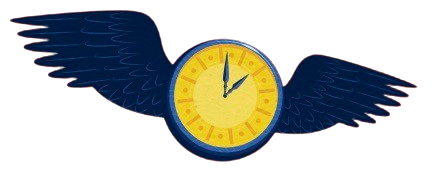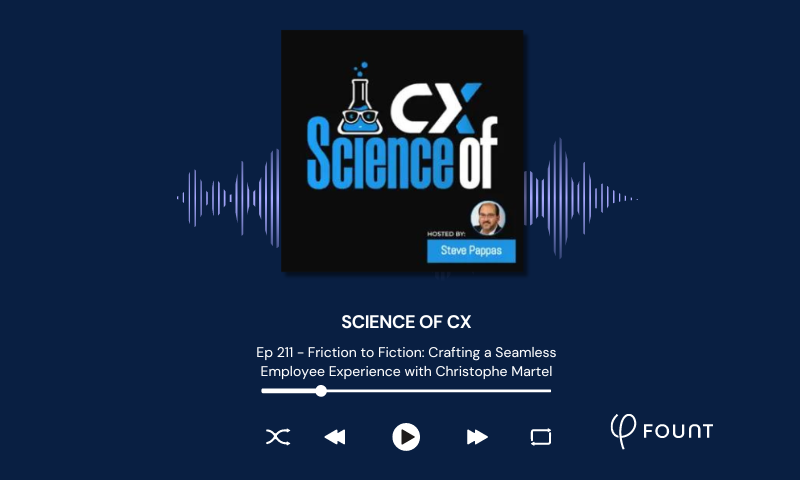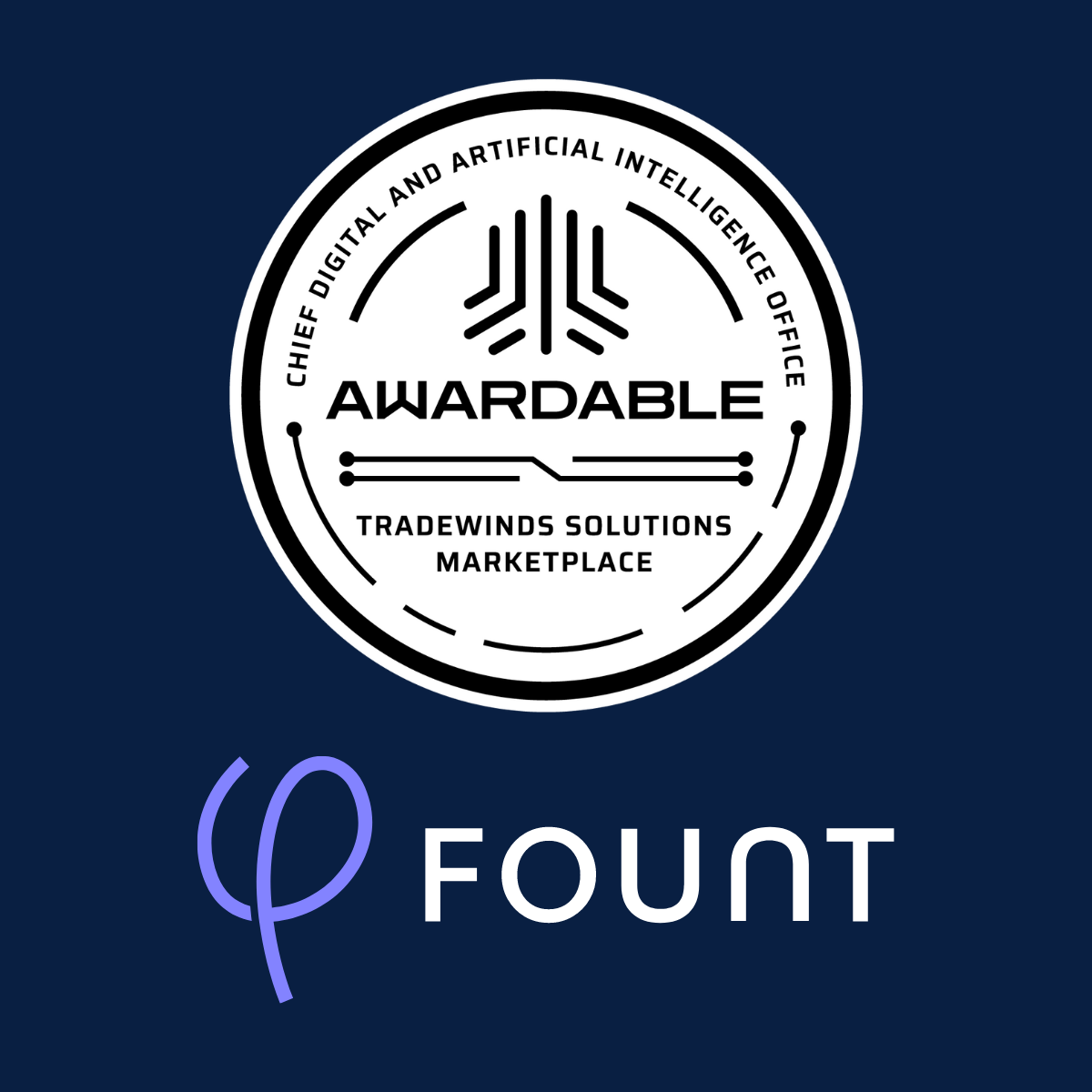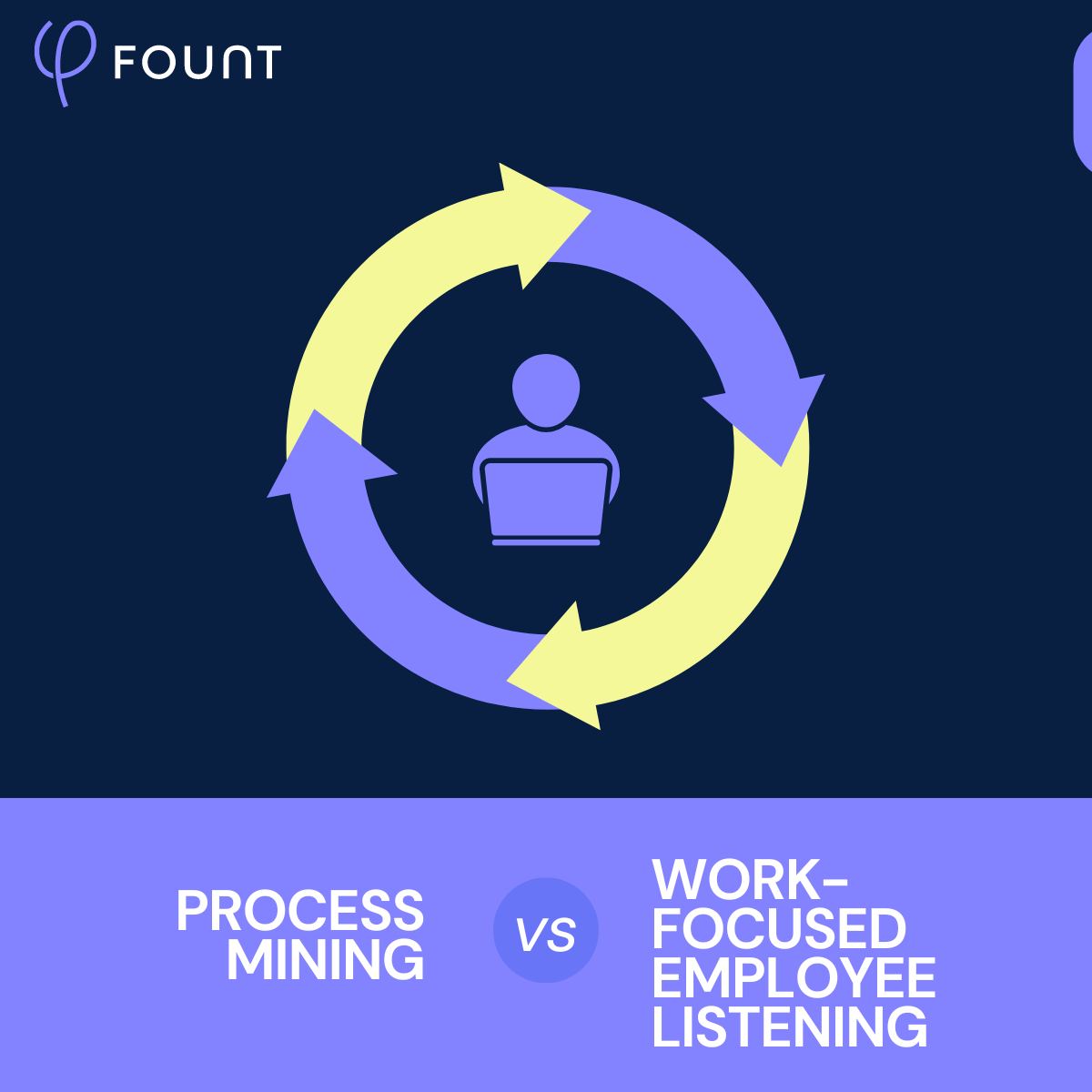In this episode of the Science of CX, Steve Pappas speaks with FOUNT’s Co-founder and CEO, Christophe Martel about the critical link between a seamless employee experience and overall business success, touching on the impact on retention, engagement, and customer experience.
Christophe shares his firsthand experiences with the friction that employees encounter in their day-to-day work lives. He talks about the critical issues surrounding work friction and presents valuable insights to help organizations enhance operations and productivity. His insights are shaping the conversation around the negative effects of unaddressed work friction and its profound consequences on business outcomes. Listen to the full episode and read the transcript below.
“It’s actually not about the employee. It’s not about making employees better. It’s about making the environment better… You want to make the environment easier to perform in.”
Listen to the episode:
Key Takeaways:
1. Work Friction is a Critical Issue: Christophe Martel highlights the pervasive issue of work friction, emphasizing its significant impact on both employee and customer experiences. He describes work friction as the invisible headwind that employees often face, leading to frustration, disengagement, and, ultimately, negative consequences for customer interactions.
2. Employee Experience is a Shared Responsibility: Martel argues that work friction spans across various departments, including operations, finance, and leadership. All levels of the organization, from senior leaders to individual team members, play a role in creating an environment that minimizes work friction and promotes employee satisfaction.
3. Data-Driven Approach to Work Friction: The importance of adopting a data-driven approach to identify and address work friction effectively. This approach allows organizations to prioritize efforts, focus on the most impactful areas, and collaboratively work towards resolving issues to improve both employee and customer experiences.
4. Leadership Awareness and Collaboration are Key: Christophe underscores the critical need for leaders to be aware of the work friction their employees face and to bridge the gap between leadership perceptions and employee experiences.
By recognizing the invisible headwind, adopting a shared responsibility approach, leveraging data-driven solutions, and fostering leadership awareness and collaboration, organizations can create environments that minimize work friction and maximize satisfaction and engagement.
You can listen to the full episode on Apple Podcasts or Spotify. A transcript from the episode appears below.
Transcript
SP: Well, welcome everybody to another episode of the science of CX. I’m Steve Pappas, your host. As we’re getting towards the tail end of the season, I’ve explained many times how we go about delivering the content and designing the content for each season. There was one area that really kind of stuck out to me as needing a little more concentrated effort and that’s the area of friction and I’m going to let our guest explain what that really means today, from the employees’ perspective, from the customer’s perspective, the generalized work friction, we’re going to talk about how it happens, how to recognize it, what to do about it, and why that’s an important area for us to be discussing, especially today, especially in the economy that we’ve got today and especially in the way the workforces are evolving. So, to help me welcome in Christophe Martel and Christophe comes to us from Washington, DC and we’re going to have a great conversation about work friction. So, thanks for joining us today, Christophe.
CM: Thank you for having me. Good to be on your show.
SP: I know we reached out and we wanted to fill a gap and I didn’t want to have this season finished without us touching upon a very important issue and what you and the folks over at FOUNT to your company do with your platform really helps in those areas. So, let me give folks a little bit about your background just so they understand who we’re talking to today, and why this is an important episode. So, Christophe Martel is the founder and CEO of FOUNT. It’s a platform that helps companies identify and fix the causes of work friction. Now prior to founding FOUNT, he held a variety of executive leadership roles at the advisory and consulting firm CEB most recently, GM for the EMEA region and Chief Human Resources Officer, CEB was acquired by Gartner for 2.7 billion in 2017. FOUNT’s clients are some of the world’s leading organizations including Adidas, UnitedHealth Group, Siemens, PepsiCo, UBS, T-Mobile, Ralph Lauren, Pfizer and Discover Financial. With a resume like that, Christophe, I have to start at the beginning here to understand why did you found FOUNT, because obviously, you recognize the real problem in the marketplace, and develop the solution to solve it. But I’d like to kind of get into your head a little more as to how did you see this problem evolve? And when did you think about well, we’ve got to solve this?
CM: So, actually experienced this problem firsthand to begin with, as an employee, every employee out there is familiar with things that get in their way that shouldn’t, these may be things that HR should be doing and is not doing, these may be things that have to do with the workflow, with tools that don’t work with processes that don’t align, et cetera, et cetera. So experienced a lot of that, have been around for a while so had plenty of these experiences. As a business leader, which is what I spent most of my career doing, business leaders know that employee experience is a really important thing. It matters for retention, it matters for people’s engagement and discretionary effort and also it matters to CX there’s no way to create good CX without having employees that are satisfied with our work and I found that as a business leader, I was struggling to figure out how to create a good experience and remove friction for employees.
At CEB I shifted from the world of business leadership to the world of HR, thinking that I was gonna have a wide-open lane to go and fix this friction problem, turned out that HR on its own can’t do it either. And in this way the question of work friction that’s very related to the question of employee experience and a big driver of it ends up being owned by everyone that the company. It’s not just the business, it’s not just HR, it’s not just managers in the front line, it’s actually everyone that has to fix it. And because everyone owns it, no one owns it. That’s what typically happens. And by the way, that particular challenge is one that’s very true in the CX world. So that led me to try and figure out a data and analytics way to quantify when friction happens for workers, and what causes and why data and analytics simply because in large organizations, which are typically the most impacted by high levels of friction, data is king or queen when it comes to moving things, if you want to transform anything and prove anything, you need data to quantify the problem and to measure whether it’s resolved and that’s what the FOUNT platform does.
SP: Interesting. So, I would go as far as saying that all of us in leadership capacities, and I’ve been in the C suite for many years, is, as leaders and executives, one of the biggest facets of our job must include removing the friction from the employees so that they can perform better, because we are investing incredible amounts of money with every employee. If we look at it from the investment in every employee that walks in through our doors, that we hire, the training, the amount of work that goes into them before they’re even productive for us. Many times, we find that there’s not enough return on the investment in an employee until many months down the road. And if there is friction in their way to be able to perform at the level, we expect them to, we’re actually setting them up for failure. So, I think one of the qualities in leaders has to be to remove friction. Why this is so important to talk about, and to talk about now, is that let’s challenge all of the leaders out there to say, you know what you invest in all employees today, the economy is beating us all right now, it’s hard to find the right people, it’s hard to hold on to the right people. So maybe now we’ll go into FOUNT a little bit more, how do we analyze whether or not we are creating the problem that doesn’t allow them to perform at levels we expect. And then we’re having a workforce that we don’t even see the return on the investment before they’re already gone. And we’re doing it all over again. And we don’t realize the amount of money that is being spent in this area, when we think that some leaders might think you go over to the wall, you turn on a switch, and that person is going to be at 100% Plus, right away. Because we know that doesn’t happen in really any business. So how do we recognize the problem of friction? And maybe we are putting due to our processes, our technologies, our training, all of our things that are in front of every employee, we might not be designing the workforce properly, and are creating the friction. So, let’s all be honest. Think about whether or not you’re being reasonable about have you given them all the tools? Have you given them the right training, and all of those things? So, I want you to address that, because how do we recognize where we have a problem?
CM: You started with the term leaders and leaders have a dual responsibility. One is the responsibility to demonstrate every day, empathetic leadership. And that means being attuned to what their teams are feeling, what they care about, and so on, so forth. And leaders have made great progress over time. And COVID showed actually that many leaders showed their best colors during that time. Leaders actually wear another hat that is often underappreciated, under-recognized, and in particular senior leaders, not frontline leaders, which is to design the work environment. And the work environment is not just the workplace – the buildings and even the technology that people use – but it’s actually the set of processes of technologies, of policies, of workflows that are all supposed to together combined to create value for the organization. Usually all of that is designed with the organization in mind, not the worker. And the role of the leader as a designer of that system is essentially the one that right now is not being fulfilled by most senior leaders, mostly because they underestimate the amount of complexity that system is bearing down on to workers, particularly in the frontline.
I will quote W. Edwards Deming, who was the founder of the total quality movement many, many years ago, who said, “Take a great employee and put them in a bad system, the system wins every time”. And that’s exactly what we’re talking about. Essentially, you have employees that are, for the most part, trying to perform as best they can. But operating in a system that makes it difficult for them to perform. And that is what we call work friction.
It takes a toll in many ways. Number one, it is costing two hours of work a day per worker, on average, that’s a Gartner study that found that out a couple of years ago. So, think about the cost of two hours of wasted work per day. For an organization with 100,000 people and recognize the opportunity there to recover even one hour of it is pretty exciting. It also exacts a great price in terms of people’s engagement, we actually did research recently that showed that for 70% of workers, essentially work friction is something that makes them want to quit, makes them want to stop working, stop performing. They think it damages their experience, the customers experience and is essentially demoralizing. So, you may lose an employee because of it. But you also may have an employee that is not working at their fullest. Simply because she’s frustrated with the amount of work friction they have to deal with day in, day out.
When you add the costs of wasted work – which is a pure productivity impact that CFOs would love to get their hands on – and the cost of lowered engagement and therefore higher attrition, you end up with an immense opportunity for leaders to actually pay attention to how that system that work environment is designed to make it essentially more ergonomic so that the workers have the easiest path possible to reach their goals.
Part of the issue here for leaders to not do this is two things. Number one, they don’t recognize that this is a problem. You see great leaders who are excellent at engaging their teams, walking the floors, doing everything they need to sustain morale, but actually not being that sharp on designing a great working system for their workers, most often because their assumption is that investing lots of money in technology is going to reduce friction and God knows how much is invested in technology and AI is the latest version of this to essentially make processes work better, have easier everything. But in fact, when all these processes, and these technologies converge into the work of a, let’s say, frontline worker, what you find is that their world is actually getting more complex with every layer of technology that’s added to their portfolio. And that is a dimension that organizations don’t know how to measure, don’t know how to get data on. And that is what the FOUNT platform does. And interestingly, the only ones who can see work friction, and who can describe it and identify where it comes from all the workers, typically, we see in companies, so healthcare organizations, insurance companies, banks, when you ask leaders, what is causing work friction for your workers, usually hypotheses that leaders have on what causes it are 180 degrees from the reality of what the workers see. And that’s a big problem, because you have leaders investing essentially, to solve the wrong problems. So, part of the job that the FOUNT platform does is to make sure that the problems that are faced by workers are clearly described, so that investments go after the right things, rather than adding to the complexity that’s already marring their work.
SP: Well, before we go on to how do we realize it and how do we fix it? Let me go a little deeper, if you will. Now, based on what you just said, the employee’s world is getting more complex. One thing I found in all of the consulting I’ve done is that employees find a way, they are resourceful, they can figure things out, they can figure out workarounds. But what I’ve also found to be true is that those workarounds, none of them are sanctioned by the company. None of those are the standard operating procedures. Those are not the ways you should get around a system and be able to fill in those fields quickly and get through the job. How much of it is also contributed by the fact of the way we produce the KPIs for those employees that there may be work friction there. But the employee says yes, but you pay me for the throughput, or you pay me for the Ubers, you pay me for the metrics, I have to find a way, how badly does the house of cards start to fall down, when that adds to the problem.
CM: So not to all work friction is created equal in the eyes of employees. And I’ll give you an example from healthcare call center environment, pretty complex job, very complex policies for coverage in the US, as you know and when you measure the amount of friction, and how important for a given employee is the friction they encounter in different kinds of calls that they have every day, what you find is that when they handled an abusive caller, somebody was very mad at whatever problem, it caused a lot of friction for them. However, they do not blame the company for it. They blame the caller. However, when it is about handling a complex issue, so a complex policy question. And that often requires them to lean on subject matter experts or like an internal knowledge base, etc. What you find is that they get very frustrated if they cannot find the solution, and they blame the company for it. Because in other words, you’re asking me to solve problems for customers, yet you don’t give me the tools to do it. And I blame you for that as a company. So, the reaction to work friction in terms of how much resentment it creates from an employee perspective, is very different depending on what they expect to be difficult and what they take on as well. That’s part of my job to deal with people that are irate, versus what they believe that companies should have figured out. And that bar that I’m describing, actually is constantly evolving generationally. So, Gen Z has very little tolerance for friction that they think shouldn’t be there, then they’re been raised in the age of Instagram, and social media, etc, etc. So, where things move quick, well, if it doesn’t move at that pace, when they’re trying to solve a customer problem, as an employee, they get very frustrated, much faster than someone like me. So, the notion of work friction is essentially relative to the individual and their tolerance for it and that is something that companies need to appreciate in the eyes of the worker, not the eyes of somebody who was overlooking processes and operations.
SP: It brings to mind when you talk about the company, not giving them the tools to be able to do the job. It reminds me a number of years ago, I remember, one of the large healthcare companies did a study of all of its frontline employees and found that they were taking well over 20% of every call, just looking for things.
CM: Well think of the two hours that I talked about 25% of a workday. It’s almost an invisible headwind that leaders are unaware of, but that employees know really well. And by the way, in the world of customer, if you remember Matt Dixon’s book – he was a CEB alum – about the effortless experience, it was actually a very similar finding for customers saying what drives customer loyalty. Is it the Wow, or is it customer effort? Well, it turns out that it was customer effort. That was the highest driver. It’s the same thing here. It’s like it takes too much effort for me as an employee to try and do the job that you asked me to do. So that’s what create disloyalty and employee’s disengagement.
SP: Well, I think we’re putting the spotlight on a very important area. If I think about it, if the company is not giving the employee the right tools, imagine the companies that have large scale business process outsourcing in other parts of the world, and they never get half the tools the employees get, and always feel like I have a harder time doing the job for my client. So, it actually exacerbates the problem even further. When you have to take an already problematic process set, whether it’s technology or process only. And you have to then airlifted into a business process outsourcing organization somewhere else in the world, where English may not necessarily be their first language. Now you’ve made the problem even more. So, we’re highlighting a lot of the issues because it is a big problem. And it’s one that every executive, and every business leader at all levels of the organization need to address because it permeates through an organization. So, let’s talk about not only the employee experience, but let’s talk about the customer experience and how does that take a hit when work friction exists in the organization, because I’ll tell you from my own retail experiences, my wife and I will turn to each other and say, that person really hates their job. It’s visible, they wear it on their sleeve, they don’t try, but it’s visible. But how does CX take a hit when all of this happens too?
CM: So perhaps the number one overlooked factor is it drives attrition in frontline roles like call center agents, nurses, doctors, and so on, so forth. And as you know, a new employee is not nearly as adept at delivering good service to customers, or good sales for that matter, than someone who’s experienced. So, the cost of that constant churn and what most of our customers called quick quits, so people that come in and exit in the first six or nine months of tenure, that is essentially due to work friction of all kinds, that takes the direct toll on customer experience, because you have lesser quality service. The second one is actually thinking about what do employees report about how work friction makes them feel and the research we did shows that the biggest thing it does is number one, it makes them feel like they’re wasting their time and there is nothing more demoralizing for a human to feel like they’ve just spent an hour of their life dealing with nonsense and for no reason whatsoever. And by the way, that is the same mechanism that has customers jumping providers when they have a similar experience – like being left hanging on the phone for too long with no answer or being provided the wrong answer. Well, that’s exactly the same mechanism.
The second thing that they report is actually that it damages the customer experience. So think of a typical call center agent or someone to cashier and if the cashier machine is not working in the right way, you now have a very embarrassed person standing in front of that cashier machine with lots of irate customers and everyone essentially is feeling bad about an issue that shouldn’t be there, or waiting for a manager to come and give an approval for something that needs an approval but the manager is out for lunch or whatever the story is, often you find the employee takes the sight of the customers to say I empathize with you and really I feel terrible, not being able to answer your question but my work environment doesn’t let me do it. There is a very big impact there of that happening too often and essentially customer facing employees saying, I’m either going to disengage from this, and that is probably the profile that you mentioned earlier, like somebody just is transactional, and doesn’t connect with you in a customer facing situation or they quit, because no one likes to feel terrible. So, the cost on CX, I think is well understood by companies, if I think of Zappos was a company known for putting employees at the center of their customer service ethics, and on both retention and ability for employees to solve problems, empowerments and actually the work environment that they were working in, they did something really right, and there’s something to duplicate there.
The problem though, is that with every wave of technology and process innovation, this work environment changes and every change is likely to introduce new kinds of friction that are unseen as a yet and so what the FOUNT platform does is to essentially help collect data to know what are the new sources of friction that may be new tools that were invested in with great intentions, but not working for certain categories or workers like new hires, for example, or any other aspect where friction emerges, and friction goes away because friction can be disposed of as long as you know what creates it. So, at the same time, it’s a very frustrating thing when you don’t see it. But the moment where it is made visible the moment where leaders are aware that it’s their job to manage it if you have the right data to identify it, then you can fix it.
SP: Interesting. So, I’ve been involved in a lot of process optimization projects, a lot of knowledge management, so that the employees understood the right way to do things. I would have loved to have had the benefit of the analysis and the data collection that you do prior to that, because I mean, I don’t believe technology alone is the answer to these problems. I think it is process. It’s process optimization, it’s reengineering, the process reengineering from the employee’s perspective, the empowerment and all that and those that think we’re just going to add another piece of technology, it’s just going to make their lives worse, but I would have liked to have had the benefit of that. Now instead, we would do this with the employees and facilitate an employee based and an employee-driven process analysis, and then turn that into well, okay, let’s come to the one way that we can all agree on and let’s now put that one way in a system that everybody can draw from easily quickly and be able to do the job and let’s also address the empowerment by leadership to. So, tell me from the collection of data that your tool does that FOUNT does? What is the results of it? So, what goes back, that is eye opening that allows them to action at that point? And what’s the second half? Is it recommendations? Is it putting a spotlight on the areas where they need a lot more attention? And because we know that you can’t do sweeping projects in any place of business today, you have to prioritize where you put your efforts, even if it’s to eradicate friction. So, what’s the second half of the results?
CM: So, the key word there is prioritization. By definition, there is friction everywhere. The question is, how much of it is there in which matters most in reverse order, essentially, the first job to do is to figure out when is it that employees are experiencing the most friction. So, the win is essentially the notion of moments to which moments which activities are they’re undertaking, for example, handling and abuse of color, or things of that nature. So, which of these activities create the most friction, then which ones are highly correlated with their intent to stay at the company? What that allows you to parse out is, what is it that they’re really blaming the company for, and that as a leadership team, you want to focus on problem solving. Now, within these activities, when you zoom into these moments into these things that people are trying to do, what you uncover is an array of touch points that are processes, policies, software tools, things like computers, and headsets, and things of that nature and then people other teams that are human touch points that are supposed to support that given activity and what our tool does is essentially, to give a score to each one of these touch points within the context of that particular moment and when you manage to see how these different resources that are all supposed to work to perfection, according to whoever designed that, what you realize is that some of them are essentially working fine individually but when you put it all together, you essentially have inconsistency, clashes and things that are only visible to the employee and that is what we uncovered through the data and so the first answer to your question is prioritizing which of these moments are most important to employees and our most painful, like the biggest pain point and I’m not saying the top 10, you prioritize the top three, and start having an impact on that. Because when you do, employees recognize that all of a sudden, you’re understanding that they’re facing this headwind, and you want to make it better. There’s a shift there in mindset from leaders, which is, it’s actually not about the employee. It’s not about making employees better. It’s about making the environment better. Go fix the employee, train them, motivate them, incent them as much as you want. But really, what you want to do is to make the environment easier to perform in and the moment with employees realize that then they’re eager to number one, give more feedback and for them, there’s actually no such thing as survey fatigue. If they feel that whatever they give feedback about gets improved and number 2, they are eager to even contribute to the solution. And so many of our customers use co-creation with employees to actually solve some of these points of friction, because the only ones who know it intimately are the ones doing the work. And they’re often best positioned to not radically transform anything, because that’s not really the scope they have, but incrementally improve it. And actually, just like in the customer experience world, often incremental improvement is the surest way to get results and to create a great close feedback loop.
SP:
So, as you’re describing that, the one thing that I have gnawing at me at the back of my mind is that there may be a difference between the way employees see the work friction, and not just the business leadership, but maybe the top of the pyramid, maybe the board, maybe the C suite might see it differently, even though they may recognize it with a tool. What does it take maybe for them to do the job? What does it take to justify it up through the ranks? Because these days, everybody has a project they need to get done and they’re all going to go through five budget cuts before they see the light of day.
CM: Very good question. You said it right. In our previous segment on prioritization, one of our customers recently had some heavy attrition issues because of their environment, and 40 workstreams deployed between HR and the business and IT to try and resolve it. Well, it turns out that with our data, we realized that most of the 40 workstreams were going after the wrong things. Senior leaders understand really well the notion of solving for the wrong problems, and prioritizing the right problems to solve, to say, if we want to retain employees and make them more productive, let’s have data that shows us what drives that, rather than the gut feel that most business leaders have at the top of the house, they usually started in somewhere deeper in the organization, so they know it well but they knew it really well 10 years ago and when they come to the top, essentially, their compass, as to what is really happening in the frontline tends to be off usually informed by anecdotal feedback that they get from employees when they do the rounds but that’s not the same as data that describes the importance and performance of the various resources that are supposed to support their employees, and don’t. The response we get from senior leaders is I know intuitively that things are not what they’re supposed to be out there on the frontline, but I can’t describe it in a tangible way. And that’s what the data helps to do. And to say, let’s stop investing in 40 things and maybe let’s focus on the three things that will move the dial.
SP: I could see where FOUNT is a friend of the employee and a friend of the business at the same time, because it’s not like you’re going in there, and you’re doing the analysis, because you’re going to bring in a $3 million project and a $40 million technology platform too but a lot of companies may be doing 360 degree views for reviews on an annual basis but that covers maybe one or two questions about the tools and the environment and doesn’t really get to the problems and in those types of things, because everybody knows who’s being reviewed, sometimes it’s your boss and I don’t know if people really push the envelope there. So, you need something like what you’ve got to really drill into the serious root causes and be able to cut the friction off at the source.
CM: That’s right. And in fact, what is very difficult about the problem is that for CX professionals, we all know that customer experience is a complex thing to figure out and now depending on the kind of customer relationship, let’s say from the pure, simple transactional, where you can have simple journeys and play all the way to patient experience that can be incredibly complex, because it’s now several weeks in a hospital and how do you map that out? Well, the employee experience is orders of magnitude more complex than that, the world of moments that you’re tackling is hugely complex and so that’s what we’ve decrypted essentially and one of the biggest fallacies about this problem is that HR owns it because it has to do with employees, therefore, you know, everyone’s like, well, HR, you take care of it. Well, actually HR only owns some of the moments that we’re talking about. So, things that have to do with career mobility, things that have to do with getting paid, and so on so forth. But what they certainly don’t own is the day-to-day work of people. HR has very little to do with that. That’s actually managed by business leaders themselves, and heads of operations and so on, so forth. So, the key here is, as we said at the beginning of the recording, everyone owns the problem, senior leader operations, HR, finance, everyone. The problem is to attribute the causes of friction to their rightful owners.
Take a typical case of friction in HR. Like I want to go and find a new internal role, because I want to change jobs within the company. Well, is the problem that the platform that I go on to – let’s say Workday – to look at that is not really working? Or, is the problem that the policy doesn’t let me do it? Or is the problem that there’s no real jobs available? Well, you got to get to the bottom of that, because resolving it actually goes to different owners in the company. And it’s the same with workflow. So one of the things that the data approach solves is to be able to stop the blaming, basically, to say, HR doesn’t know what they’re doing, or the business don’t know what they’re doing and say, “Who’s owning some of these touch points that are breaking down for folks? How do we collaboratively resolve it?” And in a way, the principle is not very different from the CX improvement principle, but in an environment that’s much more complex, and where most leaders don’t understand their employees as their customer, where actually, if you shift gears and you say, you’re my employee, you’ve bought a job from me and I’m here to provide you with the product that you bought, which is the job and I hope that you like it and I’m here to ensure that your usage is as good as possible. So remove friction from your job and there’s a bunch of services that the company provides to you that are health benefits, training and learning and all kinds of things and I hope that you like these services too then it’s in a way not dissimilar to a customer relationship with a very complex one and to untangle it, you need the clarity of data, otherwise, everyone gets lost in the generality of leadership and the like.
SP: I’ve got one more question for you. I know we’ve covered a lot of material. I’ve taken four pages of notes while we’re talking. So, I hope our audience has been doing that too. But we’d like to leave our audience with an exercise, something that just takes us a minute to explain but something maybe when they get together with their team, or on a zoom or whatever that can bring this problem to light even more, we have an exercise we can give them.
CM: Maybe three, four months ago, we did a piece of research to try and understand what is the disconnect between leaders and employees when it comes to work friction and some of the data that we got was saying that 95% of employees report that it has very negative impact on their intent to stay, that makes them want to take days off because it frustrates them so much, and so on, so forth. And the other side of the research we did was to also ask leaders, how much of a problem do you think it is? And how much do you think you’re addressing it? I think the exercise is one that your audience could mirror actually, try and ask your leaders, “What is the frequency of work friction that you believe employees experience? Is it every day, every week or every month?” I can tell you that on our panel, leaders say that it was monthly or less, employees say that was weekly or less, actually 30% of them said it was hourly or daily. So essentially, try to get in your own organization, the delta between what leaders believe and what employees believe. And so, you can ask the question of 10 employees, and ask the same question of 10 leaders and see the gap between the two. You can also ask the same leaders and employees, whether they believe that work friction has increased or decreased over time and the past year, and what employees say that it increased. What leaders say is that it decreased. So there again, you have a big gap of understanding between leaders who believe that all the investments they’re making and all the actions they’re taking to make employees feel better are having an impact, where employees are actually reporting the opposite. I think that’s an easy exercise that would highlight the dangerous gap there is between leaders understanding and consciousness about this particular issue, and what employees live through every day.
SP: Perfect. If people want to learn more, where can we send them and what might they want to read or understand better?
CM: We have quite a heap of resources on our website. That’s getfount.com, they can get in touch with me, happy to talk to anyone who’s interested in talking about this further. But we have a really deep white paper that describes in 50 pages, what work friction is, how it works, how it transfers between people. By the way, one thing we did talk about is how work friction is actually transferred from customers to employees. So, reducing friction for customers, is now at the expense of employees and then employees actually pass it on to managers, you kind of have a work friction transference happening. So, we have lots of literature to describe this. Some of the data I mentioned earlier in terms of people’s perception of how much work friction matters to them, why it matters, and so on, so forth, quantified, and then also more information about what the platform does and how it works.
SP: That’s great. Christophe, I really want to thank you for joining us today. This has been quite eye opening. I hope our audience will understand why this is an important issue for them to tackle. And I would not wait, this is important. Check out what Christophe has over at getfount.com and connect with him on LinkedIn. Keep the conversation going. So thank you for joining us.
CM: Thank you, Steve. Thanks everyone for listening.
About Science of CX
The Science of CX is a groundbreaking new weekly podcast developed to address the millions of businesses that need to learn techniques to compete better in today’s business landscape, by using CX as the cornerstone of a new strategy. The Science of CX is a podcast hosted by Steve Pappas, he has built his career on building, transforming, turning around and expanding companies globally.
To learn more about work friction, download our latest whitepaper.













